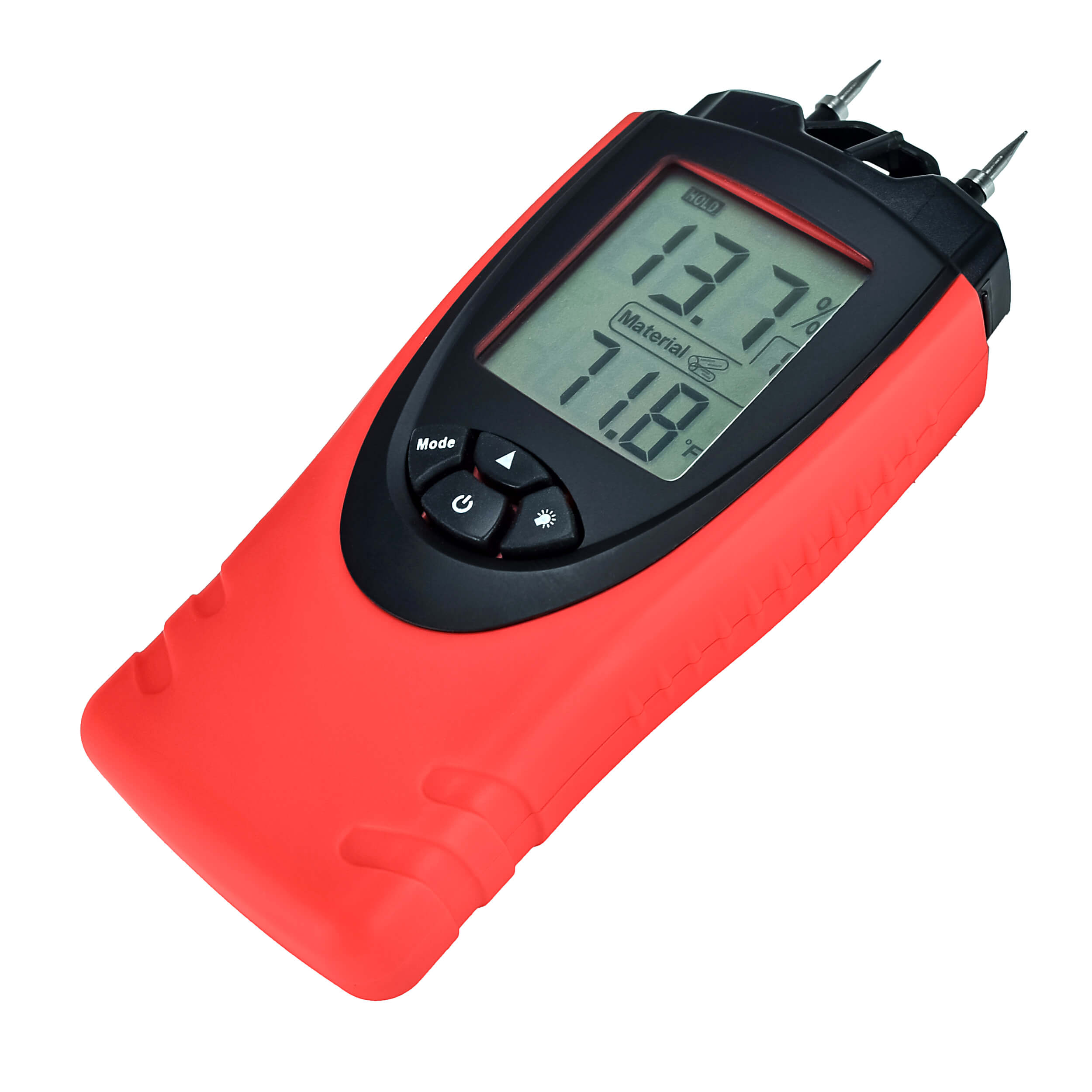The Ultimate Overview to Picking the Right Moisture Meter for Your Demands
The Ultimate Overview to Picking the Right Moisture Meter for Your Demands
Blog Article
Look Into the Globe of Moisture Meters: Every Little Thing You Required to Know
In the realm of wetness meters lies a world of precision and practicality that typically goes undetected. Comprehending exactly how moisture meters operate, the different kinds available, and their diverse usages can shed light on their significance in making certain top quality and performance.
Exactly How Moisture Meters Work
Moisture meters run by gauging the electrical conductivity or capacitance of products to determine the moisture material existing. These meters are very useful devices throughout numerous markets, consisting of woodworking, building and construction, and agriculture. By using different approaches such as pin-type or pinless innovation, moisture meters offer exact readings that aid specialists make educated choices.
Pin-type wetness meters function by putting the sharp pins right into the product being tested. On the other hand, pinless dampness meters use electro-magnetic signals to scan a larger location without creating any damage to the material's surface area.
Despite the technique used, dampness meters play a vital duty in avoiding issues such as mold growth, architectural damage, or item problems brought on by excess dampness. Comprehending exactly how these meters work is important for making certain the quality and stability of products in various applications.
Types of Moisture Meters
Provided the crucial role wetness meters play in various markets, it is necessary to comprehend the various kinds offered to experts for precisely evaluating wetness degrees - Moisture Meter. There are mostly 2 major kinds of wetness meters: pinless and pin-type moisture meters

On the other hand, pinless moisture meters make use of electromagnetic sensing unit plates to scan a bigger location of the material without causing any damages. This type appropriates for rapidly scanning huge areas and is typically made use of for flooring, wall surfaces, and ceilings. Pinless meters are convenient for taking analyses on finished surfaces without leaving any type of visible marks.
Both kinds of wetness meters have their advantages and are picked based upon the certain needs of the job available. Recognizing the distinctions in between these kinds is crucial for specialists to make precise moisture evaluations.
Applications Across Industries
With varied performances, wetness meters locate widespread application throughout different markets, assisting experts in making sure optimal conditions for frameworks and materials. In the farming market, moisture meters are important for identifying the wetness web content in grains, seeds, and hay, guaranteeing top quality control and preventing mold and mildew growth. Construction specialists count on dampness meters to evaluate the moisture levels in building materials like wood, drywall, and concrete, which is essential for preserving structural honesty and stopping concerns like rot or mold. The floor covering industry makes use of moisture meters to click for info gauge the wetness web content in subfloors before mounting different flooring, stopping expensive problems as a result of excess moisture. In the food industry, dampness meters are used to keep an eye on and regulate moisture degrees in products such as grains, nuts, and dried out fruits to keep quality and top quality. Furthermore, dampness meters play a vital duty in the repair and damage control industry by assisting professionals deal with and identify water damage in buildings quickly. Across these diverse markets, wetness meters are vital tools for guaranteeing the high quality, safety and security, and longevity of different products and items.
Tips for Making Use Of Dampness Meters
When gauging the wetness web content in numerous materials,Use the moisture meter's calibration settings to make sure precise readings. Calibration is critical for the proper performance of a wetness meter. Prior to each usage, it is a good idea to inspect and readjust the calibration settings according to the certain material being evaluated. Furthermore, make certain the meter is set to the appropriate wetness array for the product you are gauging to acquire the most specific outcomes.
When making use of a pin-type moisture meter, place the pins to the proper depth suggested for the product being evaluated. This ensures that the wetness analyses are drawn from the appropriate deepness within the product, providing a more precise depiction of its moisture material. For pinless moisture meters, bear in mind to maintain proper call with the product's surface to obtain reliable readings.
Consistently inspect and change the batteries in your moisture meter to stop imprecise analyses due to reduced power. Store the meter in a risk-free and dry place when not being used to extend its lifespan and preserve its precision. By following these suggestions, you read here can make the most of the efficiency of your dampness meter and acquire precise wetness material measurements throughout different products.
Maintenance and Calibration
To ensure the accuracy of dampness content dimensions, normal maintenance and calibration of the wetness meter are essential steps in its correct performance. Calibration readjusts the wetness meter to guarantee that it offers consistent and trustworthy outcomes.
Calibration should be performed occasionally, especially if the dampness meter is made use of regularly or in critical applications where exact measurements are required. By adjusting the moisture view and maintaining meter routinely, users can trust the accuracy of the moisture material measurements gotten.
Conclusion

To conclude, dampness meters play a vital function in different industries by accurately gauging the wetness web content of products. Understanding how these tools work, the different kinds readily available, and appropriate upkeep and calibration are important for getting reliable results. Whether in production, building, or farming, making use of wetness meters aids make certain quality assurance and performance in procedures.

In verdict, wetness meters play a vital duty in different industries by precisely measuring the wetness web content of materials.
Report this page